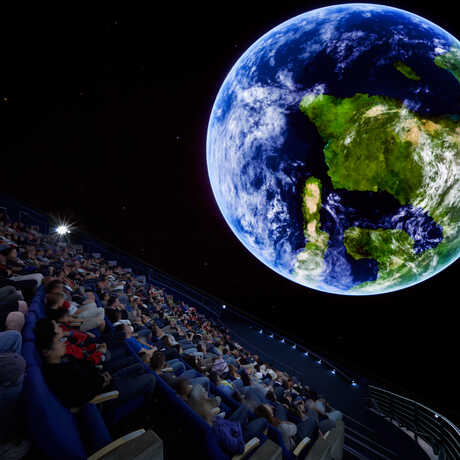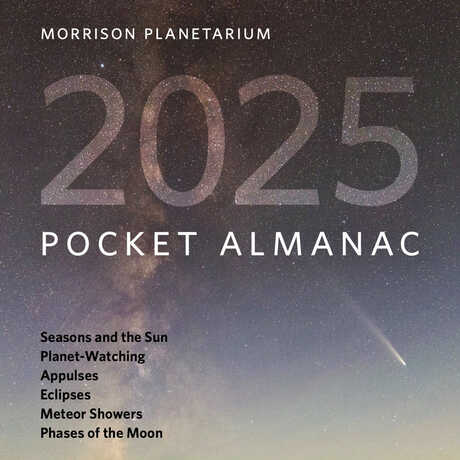From outer space to Earth's inner core, explore the universe from Morrison Planetarium's 75-foot digital dome.


The gravitational lensing of the quasar known as RX J1131-1231 is considered one of the best lensed quasars discovered to date. The foreground galaxy smears the image of the background quasar into a bright arc and creates four images of the object. Credit: ESA/Webb, NASA & CSA, A. Nierenberg
Revealing Dark Matter with Strong Gravitational Lensing
Monday, June 2, 7:30 pm
Morrison Planetarium
Featuring Dr. Anna Nierenberg, UC Merced
The overwhelming majority of matter in our Universe is believed to be an unknown new ‘dark’ particle that exists outside the standard model of physics and does not interact with light. An important goal of modern physics is to understand what this particle is. Dr. Nierenberg will provide an overview of the observational evidence for the existence of dark matter, introduce strong gravitational lensing- where space-time is bent by massive objects- and conclude by explaining how we are using this phenomenon to gain new insights into the nature of dark matter with the James Webb Space Telescope, Hubble Space Telescope, and Keck Observatories.

Anna Nierenberg was born in Sacramento and raised in the Bay Area and San Diego. She received her B.S. in Physics from UCLA and her Ph.D. in Physics from UCSB. After a three-year stint at the University of Ohio as a Postdoctoral Fellow, Dr. Nierenberg was grateful to return to California and is currently a professor in the Physics Department at the University of California, Merced, researching dark matter.
From outer space to Earth's inner core, explore the universe from Morrison Planetarium's 75-foot digital dome.

Download Morrison Planetarium's 2025 Pocket Almanac to stay up-to-date on eclipses, meteor showers, satellite spottings, and more.
